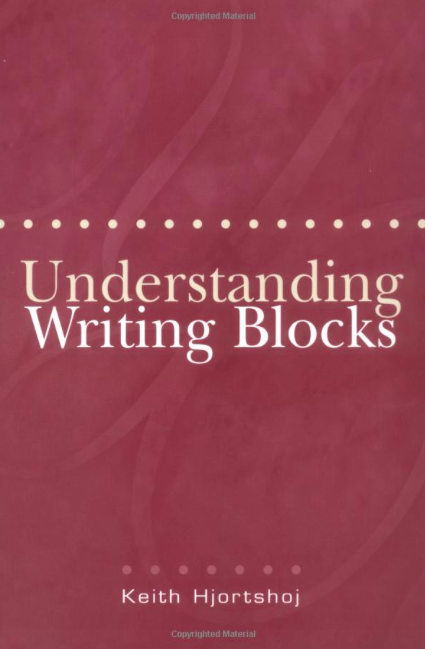Not too long ago, I published a post about a conference I was able to attend in which Cornell Professor Keith Hjortshoj spoke on writing blocks and how to address them. Following this conference, I was able to take home copies of a few of Hjortshoj's books and I am currently making my way through his work, Understanding Writing Blocks.

This slender volume is a 150-page treasure trove with enough insight and complexity for an entire blog post on each and every page. I am only around halfway through the book currently and I am already overwhelmed by the amount of truly profound and perspective-altering wisdom that Hjortshoj has to share. I would venture to predict at least a few blog posts based on information gleaned from these pages. For now, however, there has been one thing in particular that has struck me in particular while reading Hjortshoj's writing that I wanted to spend some time reflecting on.
I have always considered composing of any kind, but particularly alphabetic writing, to be a very mental exercise. Writing is a form of communication in which the crux of the whole activity is to capture and share thoughts and ideas; the thinking portion of this process seemed to be the real heart of the matter. This view has shaped much of my thought on composition pedagogy and on my own composition process. As an unexpected alternative to this view, Hjortshoj holds a much more holistic understanding of writing as something that is supremely physical as well as mental and intellectual. In fact, he says "writing cannot be purely mental because thinking, in itself, does not produce writing" (9). For Hjortshoj, the physical elements such as the writing instrument, the paper, the environment in which the writing is taking place, the use of the human body to produce the writing, and a host of other entirely material factors are all necessary and important components of the composition process.
In saying this, Hjortshoj is suggesting that, as teachers helping students develop complex and personal writing skills, we cannot focus strictly on their mental processes. If we neglect the physical aspect of writing, we leave holes in students' ability to understand and develop their own systems for making meaning through their writing. Hjortshoj discusses the incorporation of the physical nature of writing into our teaching specifically in relation to helping students overcome blocks in their writing. He notes that students who are suffering from writing block often demonstrate a somewhat innate understanding of the physical aspects of writing by expressing their struggles "in the language of movement and physical sensation" and saying "that they feel immobilized, motionless, stuck, stranded, mired, derailed, disengaged, disembodied, paralyzed, or numb" (9). In situations like these, the traditional teacher assists are generally entirely psychological or mental, focusing very little on the potential physical or material hindrances to the students' concerns. While Hjortshoj's discussion refers specifically to helping students overcome writing blocks, his perspective is a necessary one for any teacher looking to strengthen her ability to insightfully and holistically guide students through their personal writing processes.
Throughout his work, Hjortshoj provides ample opportunity to consider how incorporating the physical nature along with the mental nature of writing into our composition pedagogy creates a much more integrated and comprehensive educational experience for our students. He discusses helping students discover their writing processes by considering the physical aspects of their composing. Hjortshoj offers the idea that "taking a walk or making a cup of tea can be a form of prewriting if you use these activities to collect your thoughts" (25). He also proposes free-writing as a way to help students tangibly connect the physical and mental components of writing. In free-writing, "thinking and writing become a single, uninterrupted activity, both mental and physical" (29). In one particular anecdote, a student with a strong emotional or psychological drive for perfection found that he was able to write more freely on a piece of paper that was somehow marred or imperfect; the physical imperfection gave him the emotional freedom to experiment (16). All of these are just examples of ways in which being open to the consideration of the physical in our view of the writing process can potentially benefit our students in their journeys to becoming skilled and independent writers.
Hjortshoj plainly acknowledges that the physicality of writing is meaningless without the intellectual abilities of the human composer. However, he posits that the thoughts and ideas of a writer hold very little capacity to shape and impact if they are not communicated through some physical means. "Like almost everything else that we do, writing is both mental and physical. And if these dimensions of self in the world are not coordinated, writing will not happen" (10). As someone who is concerned with making writing happen, this is a statement that carries great weight and that I will have to think on for some time.